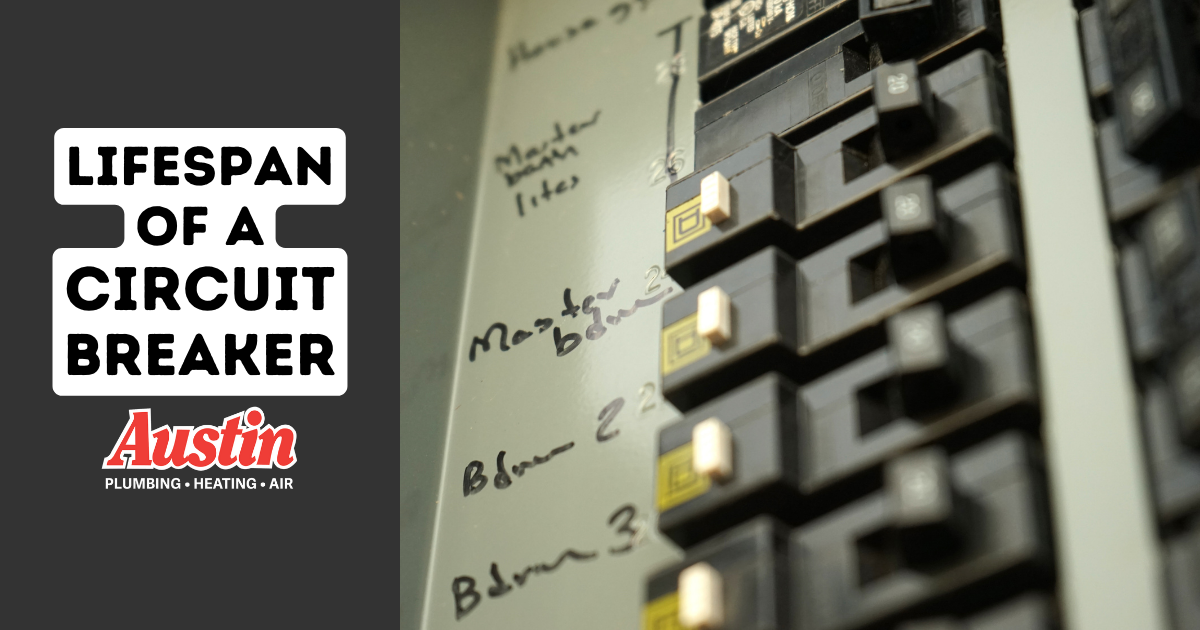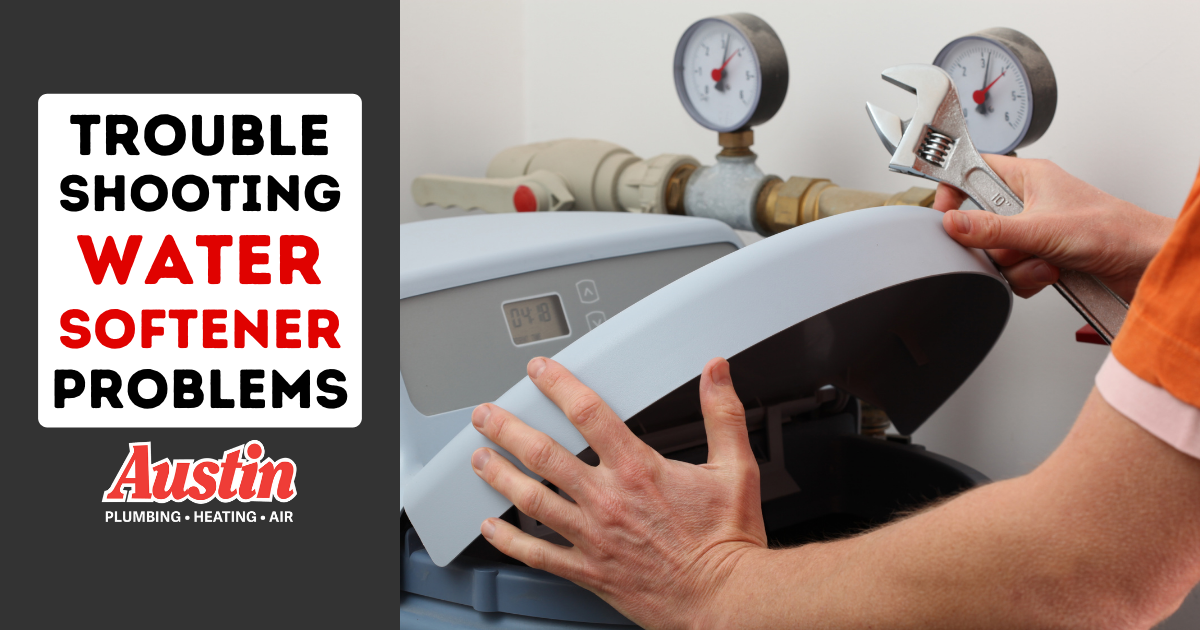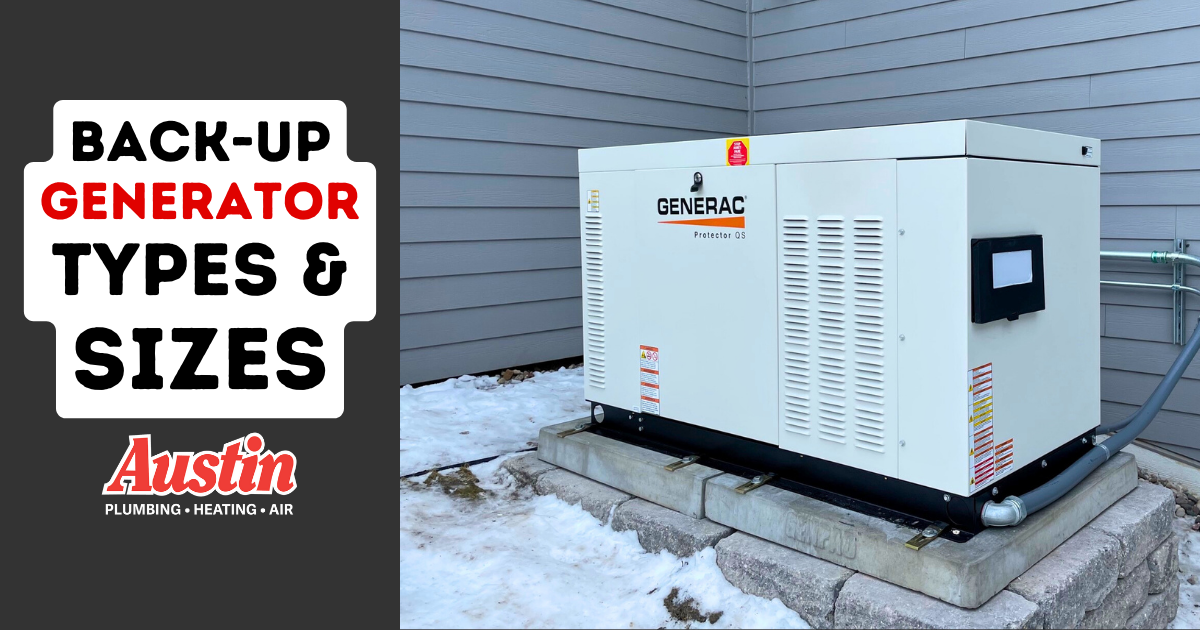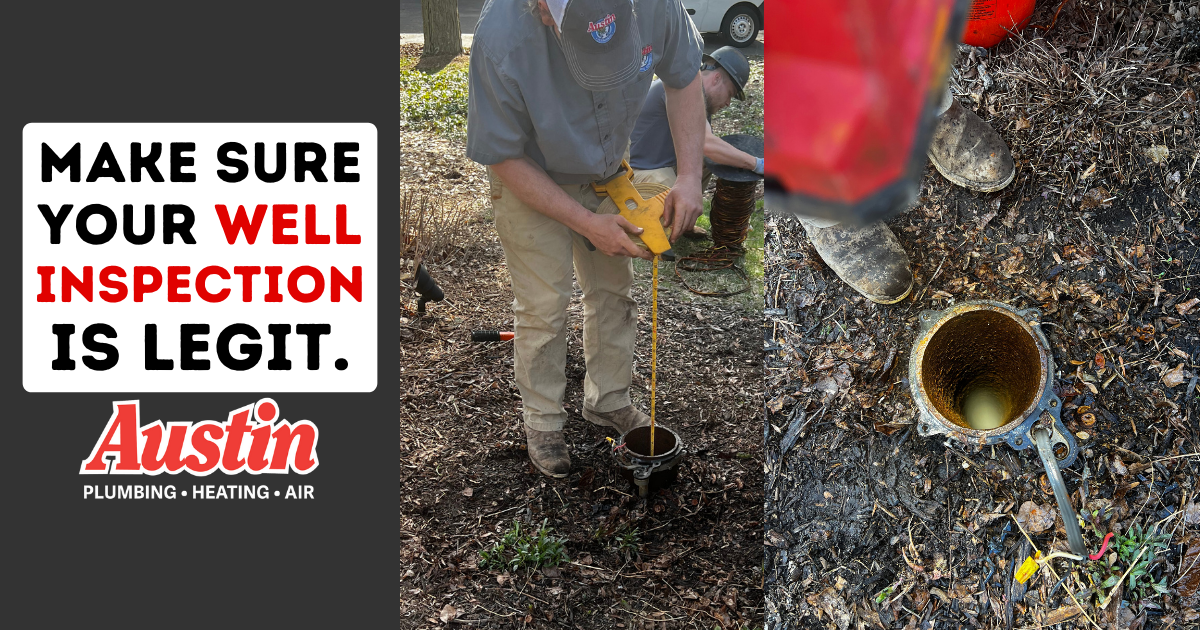How Long Does A Furnace Last?
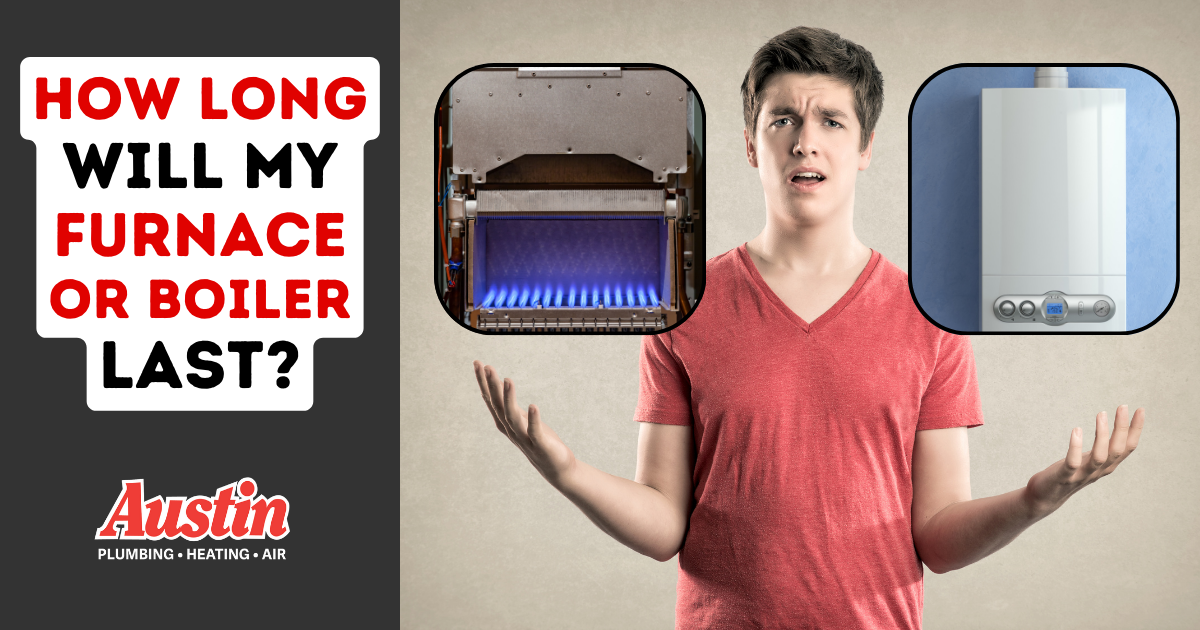
A Master Tradesman’s guide to making your furnace last longer (and preparing for the inevitable end of its life).
Humanity’s come a long way from building fires to building furnaces–but even modern heating systems don’t last forever.
We’re still mammals at the end of the day. And in Wisconsin, the cold season can get so severe that a reliable furnace or boiler has to provide WAY more than just comfort.
Frankly, it has to be strong enough to sustain life. If your furnace can’t survive the cold, how will you?
6 Factors that Affect a Furnace’s Life Expectancy
So many things can make or break a furnace’s potential lifespan! Luckily, some of them are within your control. The list below should help you make informed decisions about maintenance, repairs, and replacement going forward.
1) Type of Furnace
Furnaces come in various types and styles–some better than others. The most common furnace type in Wisconsin is fueled by natural gas, followed by LP or propane gas. After gas furnaces come electric furnaces and oil furnaces. Then there are hybrid heating systems, which are a newer innovation, but one that’s quickly gaining popularity.
Many of our clients also use hydronic heating. If your home has in-floor heat or hot water baseboards, that’s you–in which case, your furnace is really called a boiler.
The type of furnace or boiler you use can significantly impact the lifespan of your home heating system, but more on that later. For now, let’s move onto…
2) Quality and Brand
A high-quality, well-built, made-in-the-USA furnace is what the furnace gurus at Austin Plumbing, Heating & Air recommend, and that’s what we install. Within that, there are still plenty of models to choose from, for all different kinds of homes.
Of course, you can save some money by going with cheaper HVAC equipment, but is the lost time worth the money saved? No. Keeping your family safe and warm means investing in a quality furnace–one that won’t fall apart any time soon. Remember: you’ll only get what you pay for!
3) Maintenance and Regular Servicing
There’s no getting around this: If you want to avoid having to replace your furnace, you have to take care of it while it’s still functioning. Neglect it enough, and even the best brand in the world will be reduced to a pile of junk before your eyes.
Regular servicing by a professional is vital to prevent early wear and tear, maintain energy efficiency, and extend the life of your heater. That means routine inspections, thorough cleanings, and addressing minor issues before they can progress into serious problems.
Once per year is enough to see a difference. Don’t break the bank to save your furnace! Learn more about our maintenance club here.
4) Proper Installation
Don’t get me wrong: even old furnaces can benefit massively from maintenance work. But you need to understand something: The day your furnace is installed will be the most important day of its entire life.
HVAC systems have to be designed specifically for the home you live in. They have to be sized properly. They absolutely MUST be installed to the manufacturer’s specifications. And so much more. Details like these add up quickly to determine how long your furnace or boiler can actually serve you!
The key to getting maximum use out of your heating system is fortunately pretty simple: Make sure you choose a company that does furnace installation with the life of the system in mind.
5) Usage Patterns
You know how we pointed out that furnaces don’t always get the attention they deserve? Well, sometimes they get a little too much attention. Just…not in the way you might realize.
Don’t worry–we’re not saying you can’t use it when you need it. You should be able to have the heat on all night, every night during the winter. That’s not the issue here.
But during the fall and spring seasons, when outdoor temperatures are constantly fluctuating, resist the temptation to constantly adjust your thermostat back and forth. No heating system is designed to cycle on and off a dozen times within the course of a single day. (Also, as an aside: changing the set temp from 68° to 78° won’t make it hit 70° any faster, but it will cause premature damage to the system.)
Here is sage advice: Set your thermostat to one specific temperature and leave it alone! Think of this like “city miles-per-gallon” vs. “highway miles-per-gallon”. The less your furnace has to stop and start again, the less likely it is to break down in the middle of somewhere cold.
6) Immediate Surroundings
In Wisconsin, most homeowners have their HVAC equipment located in the basement–and most basements in our market are the perfect environment for a furnace to live a long and useful life. But some basements are not ideal–they’re perpetually wet, musky, unsanitary. Even worse, there are HVAC companies out there who see no problem with installing a furnace in the attic or crawl space.
Environmental factors such as air quality, humidity levels, and exposure to corrosive substances can spell doom for a furnace, causing its components to start failing early. Before you get a new furnace, do yourself a favor by making sure the install zone is clean and dry.
Deciding Between Repair and Replacement for Broken Furnaces
At the end of the line for any furnace or boiler is typically a fork in the road caused by a heating system breakdown. The good news is that most furnaces, assuming they were installed properly, will give you at least 10 or 12 happy years before reaching this point.
When they do eventually give out, you’ll be faced with a choice: you can repair the old furnace, or replace it with a new one. This decision is usually made by accounting for the cost of the repairs needed as well as taking the age of the furnace into consideration.
The Cost of Unforeseen Breakdowns
As pained as we are to say it, the truth is that sometimes, even young boilers and furnaces experience major breakdowns–the kind that can lead to thousands of dollars’ worth of repair bills.
Say you have a relatively young furnace–installed less than 10 years ago–and you encounter the rare misfortune of a total system failure that threatens to put you $2,000 in the hole. In cases like this, it’s not a bad idea to use that money on a completely new furnace or boiler instead.
When All Hope Seems Lost
On the other hand, it’s often possible to revive furnaces that most people would give up on. Inexperienced technicians may not know any better.
Team Austin is proud to say we’re different on this front. We routinely service furnaces as old as 20 years post-install or more. (They’re usually the ones we installed ourselves!)
Believe it or not, there are much older furnaces out there that have never (knock on wood) experienced anything that would be considered a “major” breakdown. This could simply be due to a lifetime of proper TLC…or it could be because we did such an impeccable job way back when we installed the heating system. 😉 Science would suggest a combination of both are to thank!
Average Life Expectancy by Furnace Type
The moment we’ve all been waiting for–the answer to the question, “How long can I expect my furnace to last?”
Find your furnace in the list below. If you’re considering a new one, even better–use this information to guide your decision!
-
Natural Gas Forced-Air Furnace: 12-15 yrs
The most popular heating choice in the SE Wisconsin region, natural gas furnaces tend to live between 12 and 15 years. If particularly well-maintained, they can exceed this range by several years.
-
LP (including Propane) Forced-Air Furnace: 11-13 yrs
For homes that don’t have access to natural gas, propane and other forms of liquid petroleum the popular choice, and more economical than heating with oil.
However, because LP gas tends to burn a little bit hotter–and because its emissions aren’t as clean–furnaces that depend on it don’t last quite as long as standard gas ones. Even in perfect circumstances and with annual maintenance, this technology hard-caps at a usable lifespan of 15 years at the absolute maximum.
-
Gas Boiler: 15-20 Years
Gas boilers provide a hearty source of heat–and they’re hardy, too, since most old Wisconsin boilers were made of cast iron. They’ve been known to last for over 30 years (amazing, right?), which means many of them are still around in our market.
Modern, high-efficiency gas boilers make better use of energy, but their heat exchangers are a little different, making these appliances less durable than those manufactured in previous generations. With adequate maintenance, a minimum of 15 years is expected, and up to 20 is common.
-
Electric Furnace: 15-20 yrs
Electric furnaces are pretty rare, and they’re not a great heating choice for a place as cold as Wisconsin. But we’ll give credit where it’s due. If there’s one thing an electric excels at, it’s durability. Simplicity of design means very few wearable parts, so it’s normal for an electric furnace to last just as long as the average gas boiler.
-
Oil Furnaces & Oil Boilers: 12-15 yrs
The cost to operate oil furnaces/boilers is the biggest reason–but far from the only one–that they’ve become largely obsolete. However, old-school oil boilers and furnaces have been described as lasting “forever”.
Although we don’t install or service oil equipment, we’re nothing if not thorough, so we figured we’d include this information for the curious. Based on our research, the lifespan of a modern oil heating system still doesn’t exceed that of the average gas-fueled system.
-
Hybrid Heating Systems: 12-15 yrs
Hybrid systems combine a heat pump with a gas furnace to generate heat. Often referred-to as simply “heat pumps”, these systems have a base lifespan that is similar to their respective gas counterparts. However, they tend to live a little longer, since the heat-pump portion of the appliance is able to carry most of the heating load.
The life of a hybrid/heat-pump furnace averages 12-15 years in Wisconsin’s climate, and possibly more with top-notch maintenance.
IMPORTANT: Tips to Extend Furnace Lifespan
Everyone wants to get as much life out of their heating system as they can. We get it–which is why we’re sharing these life-extending tips from our top Furnace Physician.
-
Take care of your furnace with maintenance!
We’ve said it before, and we’ll say it again: The best way to avoid having to buy a new furnace is to take care of the one you’ve got. Schedule annual maintenance with one of our Furnace Gurus so we can clean, inspect and tune up your furnace every year. We even have a maintenance program you can join so you never have to worry about if your furnace is getting the proper care it needs.
Still not convinced? Learn more about furnace maintenance. Remember, regular servicing can catch small problems before they become big, expensive ones.
-
Replace your air filters often!
A lot of annual care consists of things you can totally DIY at home–things like cleaning your air filters and, when they’re old, replacing them. (PRO TIP: Keeping filters clear also increases the efficiency of your heating system. When energy is better used, your money goes farther each month.)
Open up your furnace’s manual some time. Don’t be intimidated! Read through the monthly checks you can do at home to make your heating system last as long as possible.
-
Keep run times long!
Modern HVAC equipment is extremely efficient in its use of natural gas to heat your home (especially if you have a high-efficiency furnace). It’s becoming less and less important to set your thermostats back at night–and more common to let the system just do its thing.
Avoid frequently adjusting the thermostat, as starting and stopping (and other abrupt changes) guarantee damage to your furnace, no matter how young it is!
Invest in a smart thermostat to help you maintain consistent and energy-efficient temperature settings.
-
Address repairs promptly!
That means ASAP! As soon as a need for repair becomes apparent, it should automatically become a priority. With furnaces and boilers, these issues don’t just “sort themselves out” when you ignore them.
If you really want to get a long, cost-efficient life out of your indoor heating system, it’s more than worth learning how to catch the signs of failure early on. If you notice any unusual sounds, smells, or reduced heating output, call Austin Plumbing, Heating & Air and have a Furnace Guru out to inspect, diagnose, and repair your furnace promptly.
-
Consider replacing your furnace BEFORE it dies.
Wait a minute. Why would you replace a perfectly good furnace or heating system? What if your furnace is only 10 years old? Didn’t we just say it should last 12 or 15 years?
Well, yes. The manufacturers of our furnaces make them better than anyone else, and we maintain them better than anyone in business. But after the 10-year mark, you should be especially keen to notice any signs of trouble, because those signs can arise very suddenly in an old furnace.
When a boiler or furnace enters the last phase of its life (typically around the 10-12 year mark), most customers choose preventative replacement. They know the time is coming, and it beats being left without heat on Christmas Day when businesses are closed, no?
Where in Wisconsin can you go for furnace service that lasts?
Well, Austin Plumbing, Heating & Air, of course!
In all seriousness, the key to prolonging any furnace’s lifespan is knowing what causes them to fail early. Remember: the type of furnace, your maintenance regularity, and even environmental conditions can all have a big impact here!
If you’re considering investing in a new furnace–or just want a straight answer about how much time your existing furnace has left–we’re here. We’ve been here for over 80 years! Reach out to us at 262-367-3808 for all your heating needs. Don’t be shy. Happy heating!

